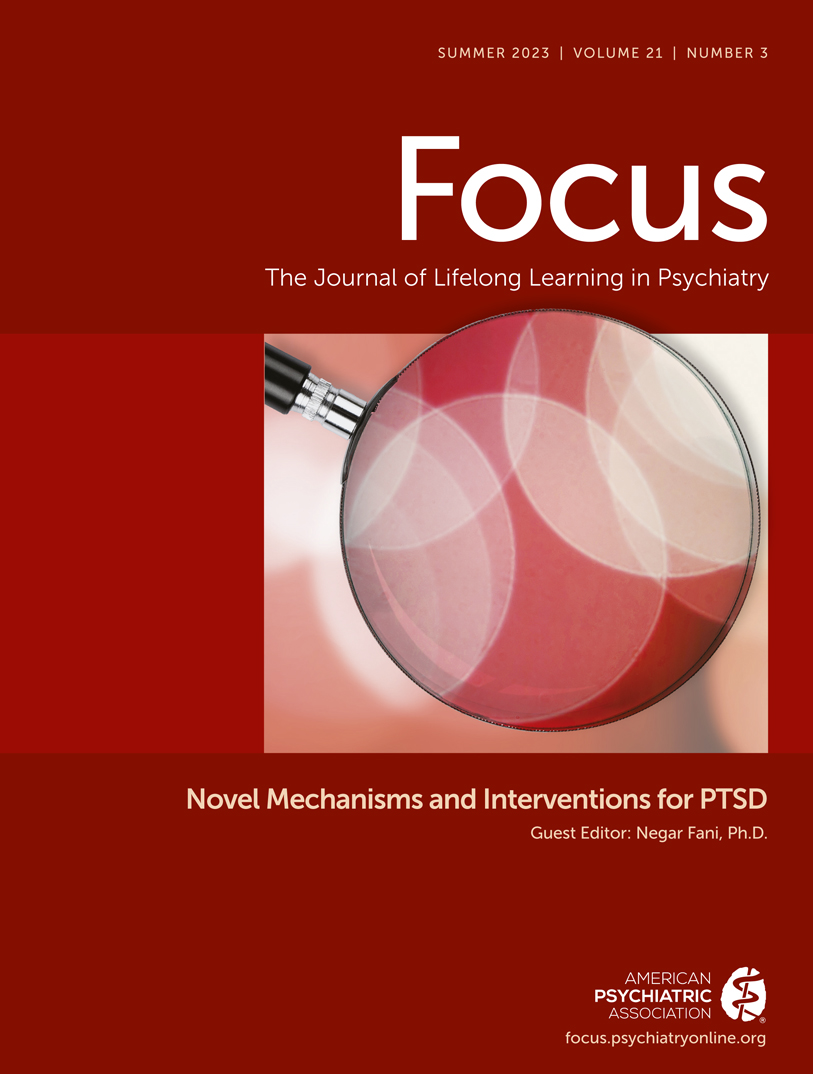Abstract
Posttraumatic stress disorder (PTSD) is a chronic and debilitating condition. Although several psychotherapeutic and pharmacological treatments are recommended for PTSD, many individuals do not respond to treatment or respond only partially, highlighting a critical need for additional treatments. Ketamine has the potential to address this therapeutic need. This review discusses how ketamine emerged as a rapid-acting antidepressant and has become a potential treatment for PTSD. A single dose of intravenous (IV) ketamine has been shown to facilitate rapid reduction of PTSD symptoms. Repeated IV ketamine administration significantly improved PTSD symptoms, compared with midazolam, in a predominantly civilian sample of individuals with PTSD. However, in a veteran and military population, repeated IV ketamine did not significantly reduce PTSD symptoms. Further study of ketamine as a treatment for PTSD is necessary, including which populations benefit most from this therapy and the potential benefits of combining psychotherapy and ketamine.



